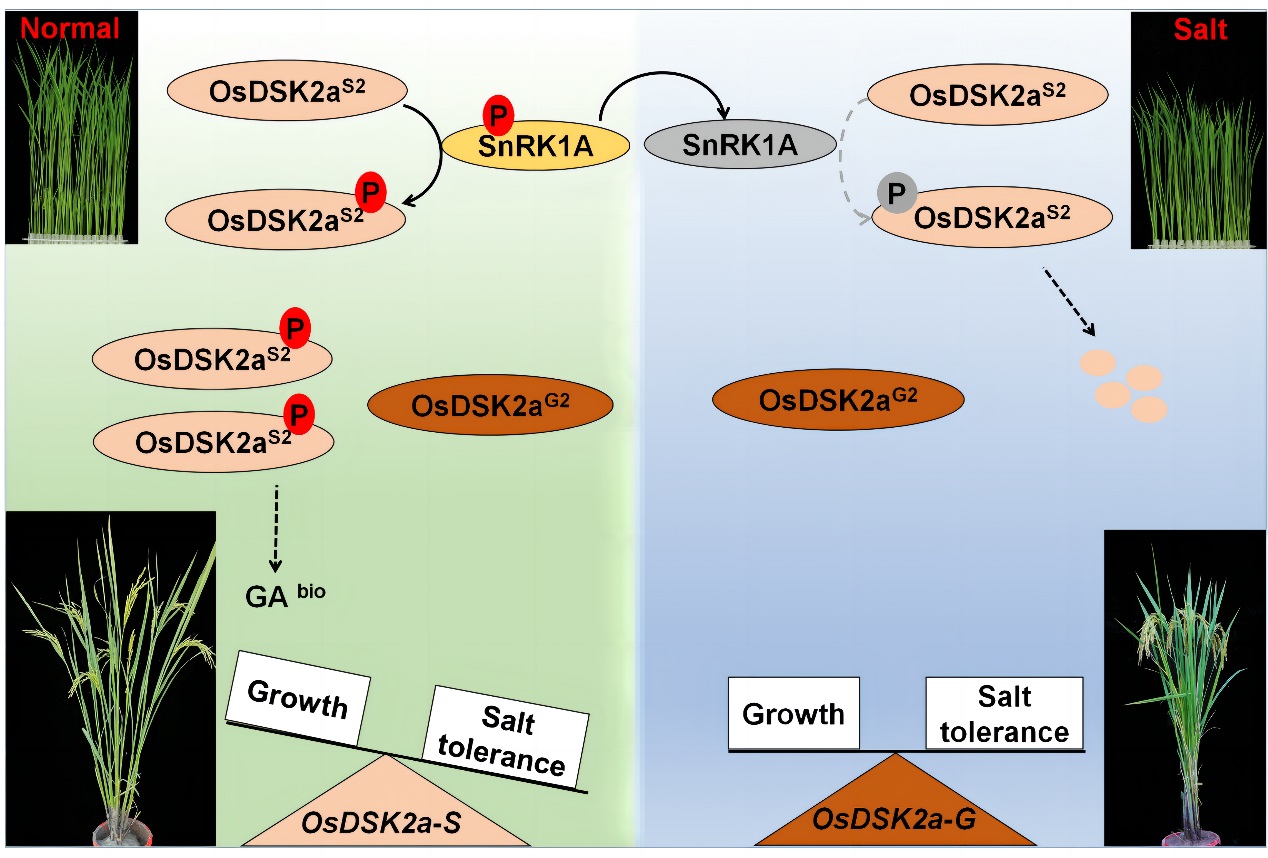Recently, Dr. Juan Wang and Dr. RongfengHuang’s group from Biotechnology Research Institute of Chinese Academy of Agricultural Sciences revealed a novel mechanism underlying the balance of crop yield and salt tolerance in rice. The work, entitled “A natural variation in OsDSK2a modulates plant growth and salt tolerance through phosphorylation by SnRK1A in rice”, was published online in Plant Biotechnology Journal on Feb. 12, 2024.
There is a large amount of saline alkali land that can be developed and utilized in China for increasing grain production. As salt stress restricts crop architecture and grain yield, identifying genetic variations associated with growth and yield responses to salinity is critical for breeding optimal crop varieties.OsDSK2a is a pivotal modulatorof plant growth and salt tolerance via the modulation ofgibberellic acid (GA) metabolism;however, its regulation remains unclear. In this study, the authorsreported that OsDSK2a can be phosphorylated by the conserved kinase SnRK1A at the second amino acid (S2) to maintain its stability. The gene-edited mutant osdsk2aS2G showed decreased plant height and enhanced salt tolerance. SnRK1A activity was suppressed under salt stressto modulate OsDSK2a abundance. Genetic analysis indicated that SnRK1A functions upstream of OsDSK2a and affects plant growth and salt tolerance.Haplotype analysis using 3 K-RG data identified a natural variation in OsDSK2a-S2. The allele of OsDSK2a-G downregulates plant height and improves salt-inhibited grain yield. These findings revealeda new trade-off mechanism between plant growth and salt tolerance, and provided a valuable target for crop breeding to overcome yield limitations under salinity stress.
This work was funded by National Natural Science Foundation of China (32030079, 32171949), National Key R&D Program of China (2022YFD1201700), the Agricultural Science and Technology Innovation Program of Chinese Academy of Agricultural Sciences (ASTIP No. CAAS-ZDRW202201), and the Fundamental Research Funds for Central Non-profit Scientific Institution (1610392020004).
More details can be found at the link:http://doi.org/10.1111/pbi.14308

Fig. The SnRK1A-OsDSK2a regulatory cascade in plant growth and salt stress response. |